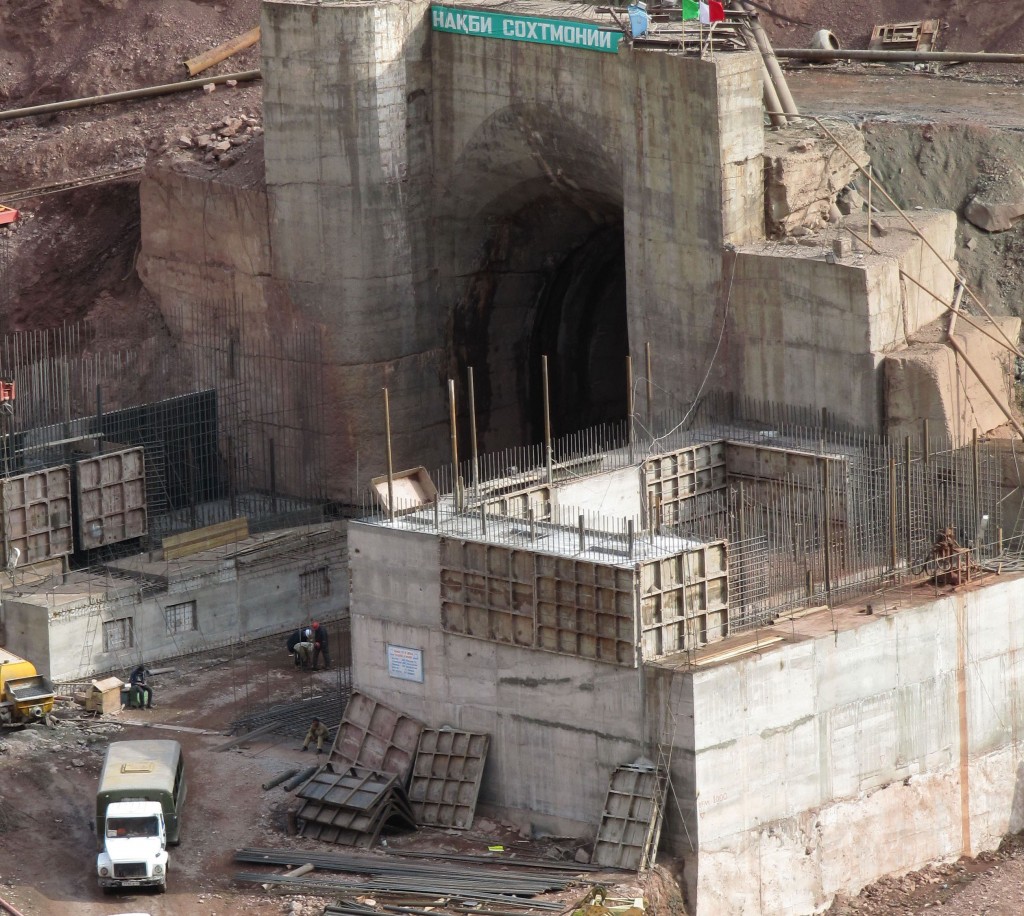
Quarter of Polled in Tajikistan See Uzbekistan as a Threat
Publication: Eurasia Daily Monitor Volume: 10 Issue: 148
By:

It used to be said in the region that Tajikistan and Uzbekistan are one nation that speaks different languages. However, over the past several years, animosity between the two has been growing.
To an outsider, the grievances of either government directed against the other sound reasonable. But it is clear that Dushanbe and Tashkent are talking past one another. In a recent opinion poll conducted in Tajikistan by the Central Asia Barometer, 24 percent of respondents named Uzbekistan as a threat to Tajikistan (22 percent view Afghanistan as a threat, and 7 percent named the United States). These results cast a new light on the relations of these two countries (https://www.m-vector.com/ru/news/?id=313), indicating that their populations are being influenced by their governments’ interstate differences.
The Central Asia Barometer report does not explain the reasons behind these responses. But Vatandosh, an Uzbek-language newspaper in the US, speculated that the results might be influenced by the mass-media campaign in Tajikistan, which blames Uzbekistan for blocking the construction of the Rogun hydropower facility that the government in Dushanbe has been persistently promoting. Vatandosh continues that while it is true that Uzbekistan runs its own media campaign against Rogun—as well as the aluminum plant run by the Tajik Aluminum Company (TALCO)—the character of the message is more aimed toward Tajikistani politicians rather than the Tajik nation (vatandosh.uz/2013/07/11/news-tadjik/). As the paper notes, the Rogun dam is a highly politicized and sensitive issue, but it seems any action by Uzbekistan that somehow affects Tajikistan is portrayed as being done in order to punish the smaller country. For example, with the recent announcement that the government of Uzbekistan will build a new $2 billion railroad that connects the Ferghana Valley with Tashkent in order to avoid using the existing railroad, which passes circuitously through Tajikistan, the head of the railways departments in Tajikistan said that “Uzbekistan was willing to work at a loss just to hurt Tajikistan” (https://rus.ruvr.ru/2013_07_23/Pekin-pomozhet-Tashkentu-naladit-svjaz-s-Ferganskoj-dolinoj-0647/).
The construction of the Rogun hydropower facility has been suspended since 2012 on advice from the World Bank until a feasibility study, funded by this international financial institution, is completed—which is expected later this year. So far, not a single major investor has been willing to fund this project. The World Bank announced that even though they are funding the study, it will not fund the construction of the hydropower facility (https://news.tj/ru/news/vb-otsenochnye-issledovaniya-ne-budut-reshat-vopros-o-stroitelstve-rogunskoi-ges). Russia had earlier promised to fund the project when its aluminum company “Rusal” was planning to build a plant in the vicinity of Rogun, with 50–60 percent of the produced electricity to be consumed by the plant (https://www.centrasia.ru/newsA.php?st=1199961240). But, since the parties could not agree on the technical terms of the construction (height and type of dam), Tajikistan dissolved the agreement (https://neftegaz.ru/news/view/103221).
While Rogun has been struggling to find sources of funding, other investors are competing to finance the regional electricity trade project CASA-1000. Although the Asian Development Bank’s (ADB) recently announced its departure from the project—thus withdrawing 40 percent of the funding from CASA-1000’s total $1 billion cost—Moscow declared that Russian energy companies may provide up to $500 million, thus filling the funding gap created by ADB’s exit (https://www.bne.eu/story5056/Central_Asian_power_export_project_in_doubt_after_ADB_pulls_funding). This is undoubtedly something Russia is able to cover since it has already committed to the building of four Upper-Naryn hydropower plants in Kyrgyzstan starting in 2015, whose total cost will be $500 million. The World Bank also expressed its interest stepping in to replace all of ADB’s promised financing (https://www.pennenergy.com/wirenews/powernews/2013/05/08/bases-in-return-for-hydroelectric-power-plants.html).
Since CASA-1000 came to the table, speculation has abounded as to whether Rogun is connected to the regional project. No parties to the project have inferred clearly that there is any connection. Furthermore, the memorandum of understanding (MOU) that ADB signed in February 2007 in Kabul with the four participating countries (Kyrgyzstan, Tajikistan, Afghanistan and Pakistan) limits the power generating countries (Kyrgyzstan and Tajikistan) to “no generation expansion.” The World Bank’s recent Project Information Document (PID) and a May 2013 presentation given in Dushanbe on the project confirms that additional power generation is not required for CASA-1000’s successful realization (https://documents.worldbank.org/curated/en/2012/06/16435491/world-central-asia-south-asia-electricity-transmission-trade-project-casa-1000; www.tajikembassy.pk/pdf/casa.pptx).
However, the same World Bank PID added that additional power generating facilities in Tajikistan could contribute to increased economic benefits that would address winter power deficits in the months when river flow is reduced or stopped due to freezing temperatures and to meet increased demand among the local Tajikistani population. This conclusion has served as a green light for Tajikistan’s government to add new generation by building Rogun. And in a May meeting with Prime Minister Zhantoro Satybaldiyev of Kyrgyzstan, Tajikistan’s President Emomalii Rahmon said that his country relies on Kyrgyzstan’s support in such energy projects as CASA-1000 and the construction of new hydropower plants. In the same speech, he lamented that “one of the countries” in the Central Asian region, clearly referring to Uzbekistan, in every way impedes the construction of one of the largest hydropower plants in the world, the Rogun dam, and hoped for Kyrgyzstan’s support and solidarity in overcoming this impediment (https://kabar.kg/eng/politics/full/7254).
As noted above, the upstream and downstream countries of Central Asia all have legitimate concerns regarding regional water security. Tajikistan publicly bemoans its struggle to provide power and electricity for heating and lighting to schools, hospitals and businesses during the winter months. Whereas Uzbekistan points out that the 60 percent of its rural population, which depends on agricultural activities, would be hit by water shortages if Rogun is built. The CASA-1000 project will enable a trade of surplus summer electricity between Kyrgyzstan-Tajikistan and Afghanistan-Pakistan. However, Tajikistan’s pursuit of building the Rogun hydropower plant, using CASA-1000 as an excuse, could come at the cost of increasing the 24 percent of Tajiks who already view Uzbekistan as a threat.




